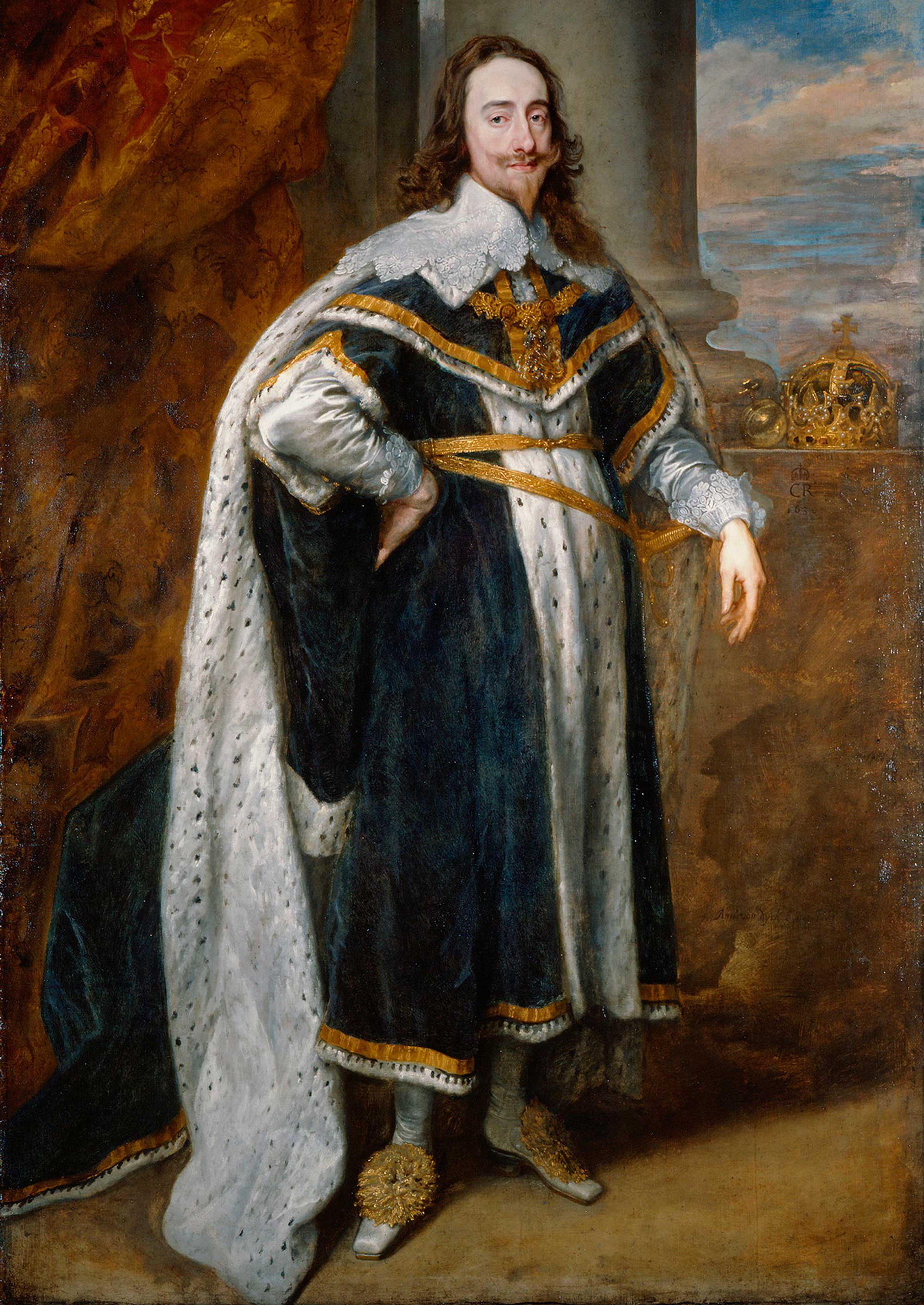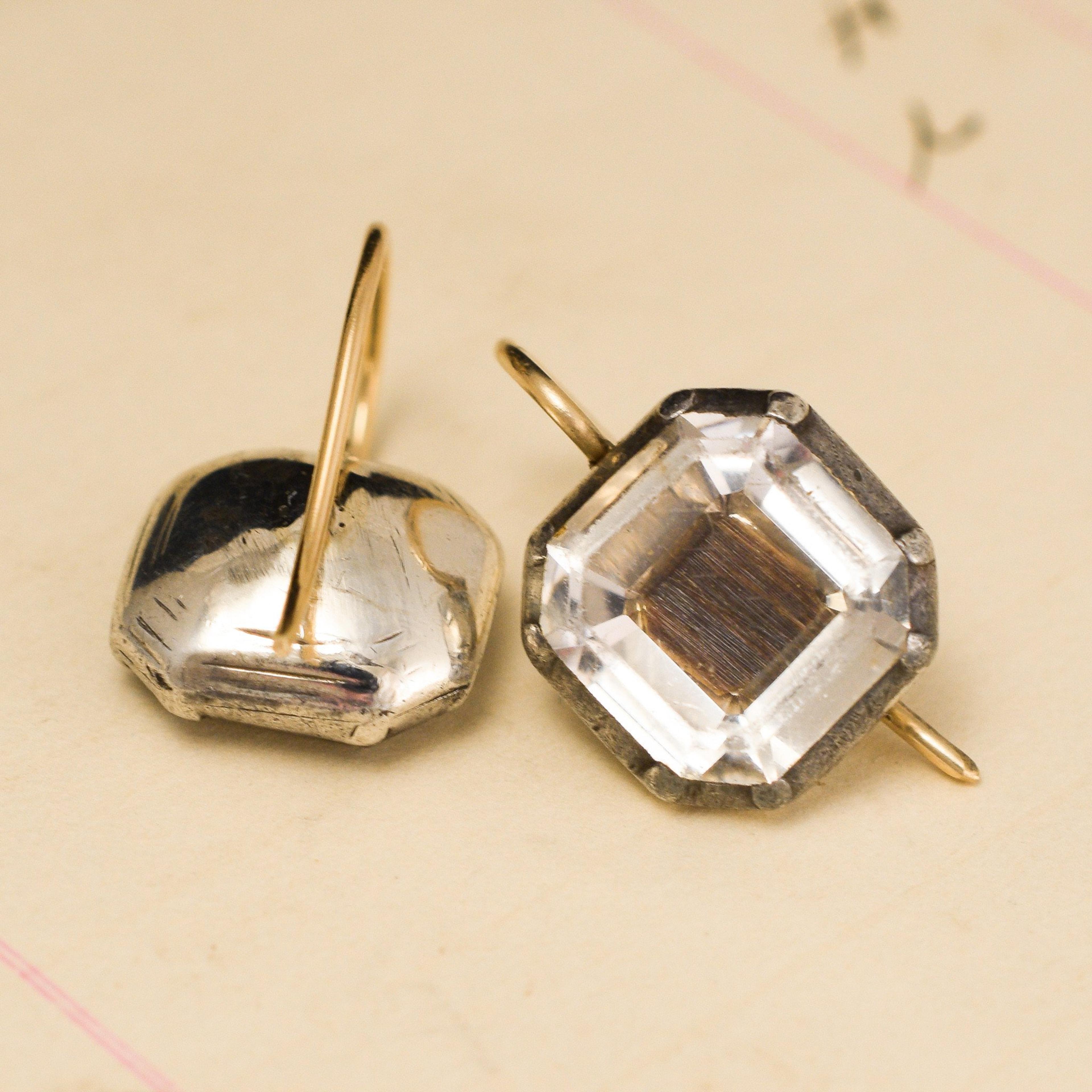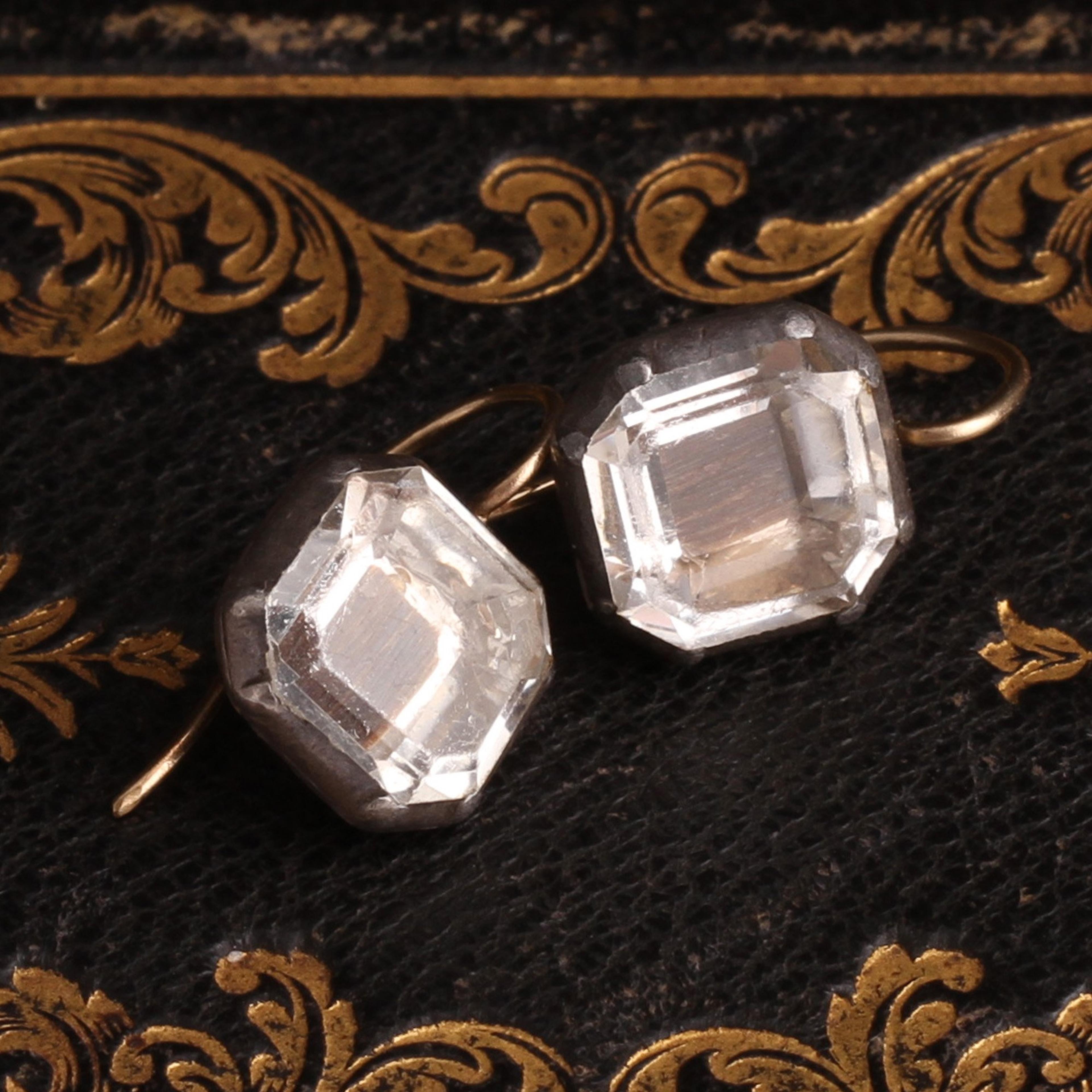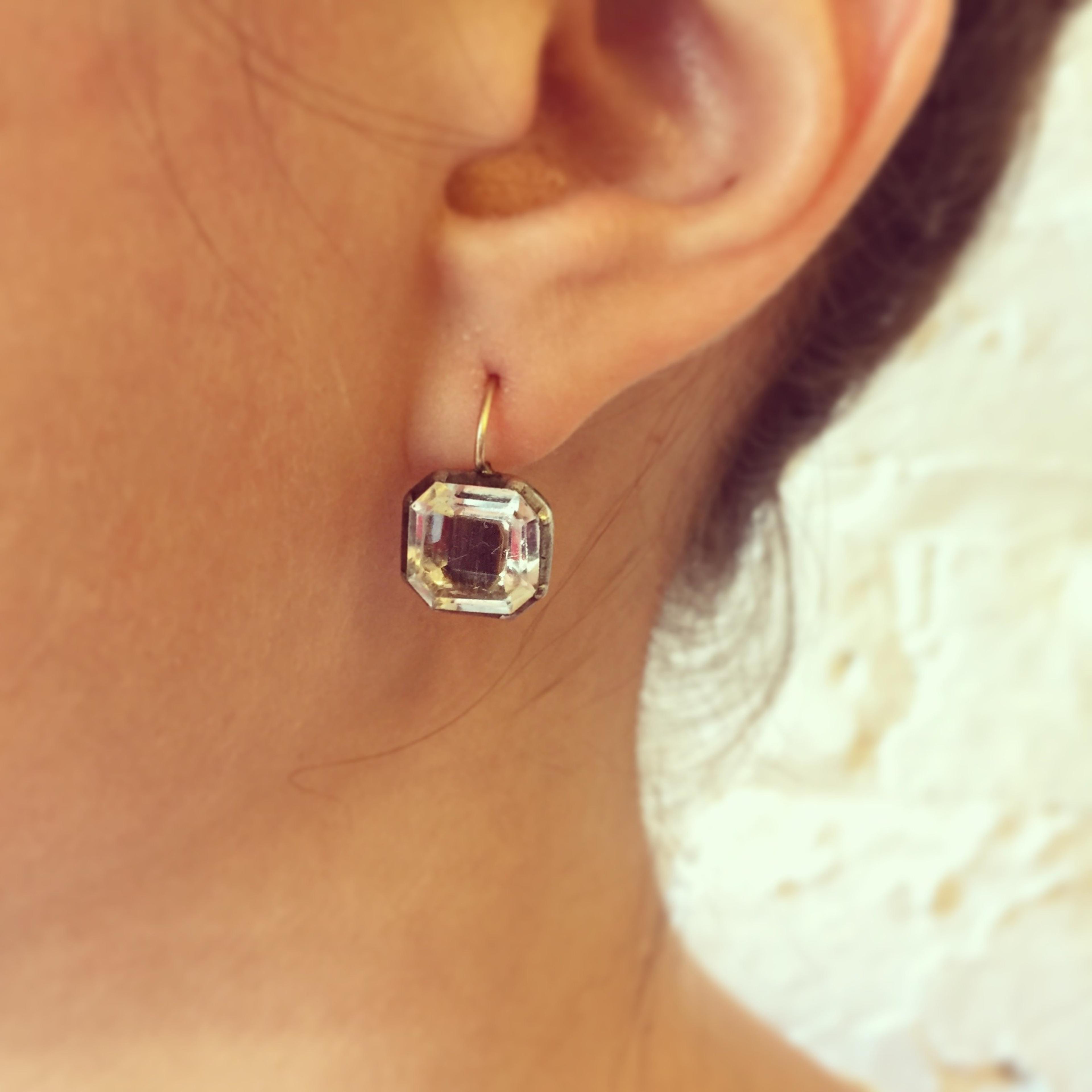These earrings set with very distinctively cut rock crystal are known as Stuart crystal, which was originally worn by loyalists to the Stuart monarchy after the execution of King Charles in 1649. The first Stuart crystal jewelry featured either the likeness of the martyred king, a lock of his hair (for the lucky few), or a cipher of his initials under faceted rock crystal (hence "Stuart crystal"). Later pieces feature a foiled back and/or a background of hair, sometimes with initials belonging to the owner or a loved one, but always with the style of crystal seen in these here. These lovely earrings converted from cuff links were made toward the end of the 17th century. Each crystal is set in silver and encases a lock of hair.
thedetails
- Materials
Silver, 9k wires, rock crystal, hair
- Age
c. 1700
- Condition
Very good
- Size
5/8" length measured from the top of the wire, 3/8" wide
Need more photos?
Send us an email to request photos of this piece on a model.
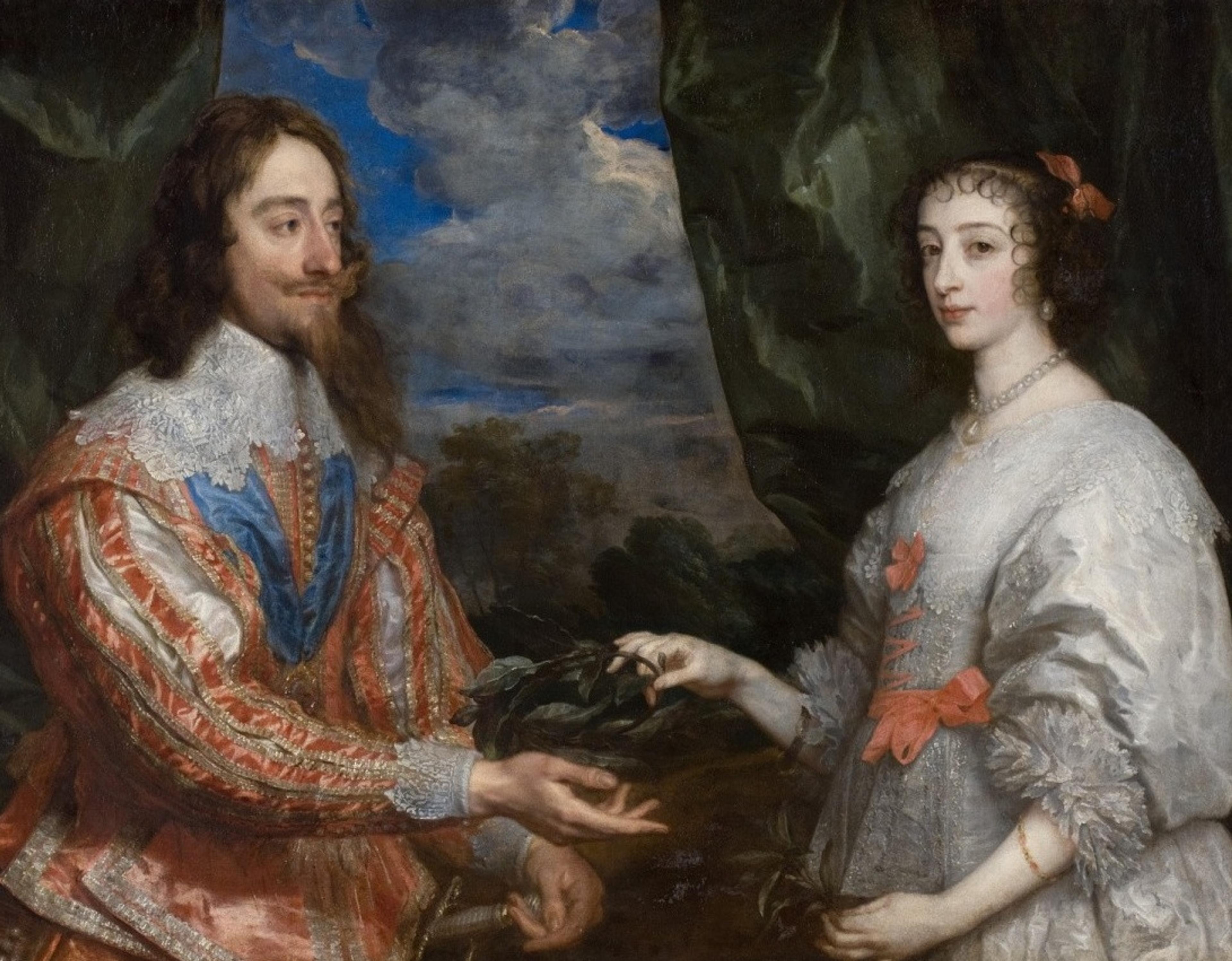
Aboutthe
StuartEra
1603 — 1714
A new era dawned when Queen Elizabeth — the last Tudor monarch — died without an heir. The monarchy was temporarily displaced by the Commonwealth of England from 1649 to 1660 by Oliver Cromwell, but was restored — aka "The Restoration" — as Charles II was invited to take the throne. His father, Charles I, had been beheaded in 1649, and most of the jewelry we see from this period was at least stylistically related to this controversial political event. During this time, discoveries and innovations transformed England and Scotland, which were conjoined after a long period of feuding. Coffee became a new trendy beverage, with 600 coffeehouses in London all catering to a different type of clientele. This imported novelty beverage was possible because of the UK's rapidly expanding worldwide trade network. Not yet interested in acquiring territories, the island nation focused instead on making a fortune exporting wool and importing goods like slaves, sugar, and tea. Everyone (except the enslaved people, of course) benefited from the new merchant class that arose, and in the process the Royal Navy became the most powerful in the world. The look of London changed, too — after the Great Fire of 1666, Christopher Wren was hired to rebuild the city's damaged churches, with his greatest accomplishment being St. Paul's Cathedral.
